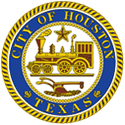CitizensNet

August 26, 2019
An update on Houston's recovery and resiliency two years after Hurricane Harvey
The following essay by staff members led by Mayor Sylvester Turner was published in the Sunday (Aug. 25) edition of the Houston Chronicle. It was written by Chief Resilience Officer Marissa Aho, an urban planner who was chief resilience officer for Los Angeles before taking the role in Houston, and Chief Recovery Officer Stephen Costello, an engineer and former Houston city council member:
Two years ago this week, Hurricane Harvey brought death, destruction and displacement to Houston. Despite Harvey, or because of it, Houston’s commitment to recovery and resiliency is stronger than ever.
One storm will not defeat this city or its people. Many residents are rebuilding their homes — but also building them to protect against future storms.
As Mayor Turner states, our diversity is what makes Houston uniquely great, and our dedication to ensure all Houstonians are protected is our foremost priority. We have made great strides since 2017 by leveraging public and private partnerships and additional local, state and federal funding opportunities.
But we still have a lengthy road ahead to make Houston a safer, stronger and more resilient city. As the city’s chief resilience officer and chief recovery officer, respectively, we travel that road every day on behalf of the city administration.
Over the years, Houston has displayed many qualities of a city that is resilient through flooding. Hurricanes and rainstorms have been part of our daily lives, and every time, we have bounced back and rebuilt our communities. Yet somewhere along the way, as we’ve built bigger, better, and stronger systems to move water out, we have neglected to embrace living with the water around us.
It wasn’t just Hurricane Harvey that showed us that we needed to do things differently. It was Memorial Day 2015, Tax Day 2016, and the continuous urban flooding that occurs after lesser rainstorms. It’s time to be more creative as we re-integrate our built and natural environments to make a city that is well-positioned for the future.
For Houston government, much of the first year of Hurricane Harvey recovery was focused on advocacy — making sure that Houston got its fair share of federal relief. Much more is still needed, but so far the city has received $1.3 billion for housing programs. The city is expected to receive another $1 billion for mitigation — such as using the former Inwood Golf Course to hold storm water — and climate-readiness projects. In addition, FEMA is expected to provide more than $2.2 billion from its public assistance program to repair and reconstruct damaged public infrastructure, and approximately $250 million for larger flood mitigation projects. But federal reimbursement programs and projects can take a decade to build up and administer, especially as they include multiple audits at the city, state, and federal levels.
This is especially clear in the housing recovery and public assistance programs, which require more than 30 steps for eligibility determination and more than 40 steps for approval prior to the release of funds.
While progress on these fronts never happens as quickly as we want, we are showing more results than many other local governments that were hit by Harvey along the Texas coast.
While federal agencies and state agencies provide funding, guidance, and technical assistance, the city and its partners will continue coordinating and moving with a sense of urgency to deliver for residents while looking beyond Harvey recovery.
The city is developing its first climate action plan, climate risk assessment, green storm water infrastructure incentives and resilience strategy to ready Houston for an increasingly uncertain future.
One year after Harvey, Houston became a member of 100 Resilient Cities — pioneered by the Rockefeller Foundation and sponsored by Shell. Resilient Houston’s approach acknowledges all underlying stresses and potential shocks that Houston could face and recognizes that the most vulnerable Houstonians are disproportionately affected by any disruption, whether it be job loss, a chemical fire that endangers neighborhoods and keeps children home from school, or a hurricane such as Harvey.
Our strategy as a resilient city is to keep Houstonians safe and stable in their homes, neighborhoods, and city while maintaining and fortifying the important social networks that exist in our diverse communities, regardless of the disruption.
As the city navigates the path to recovery and resilience, we ask Houstonians to understand that addressing flooding and the underlying stresses, while ensuring an equitable recovery, is still our top priority and to never accept what occurred during Harvey as a new normal. Takethe necessary precautions to protect lives and property.
Let us not get hurricane amnesia. We’re in the height of hurricane season now. Let us stay committed to making Houston safer, stronger, and more resilient by maximizing the programs and projects we need to build Houston forward and achieve our goals. To do so, we need every Houstonian to be involved and every partner at the table.

